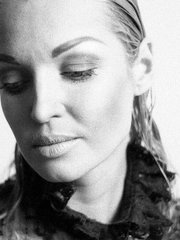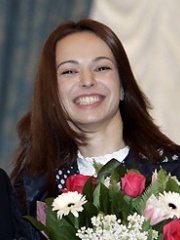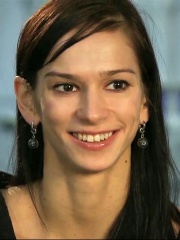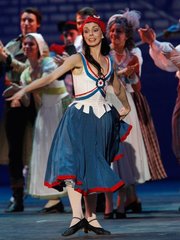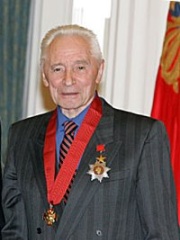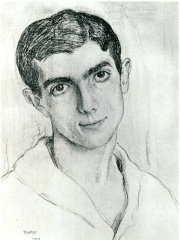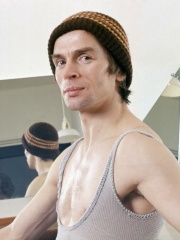

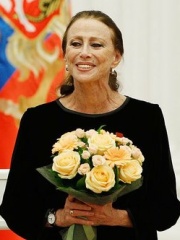
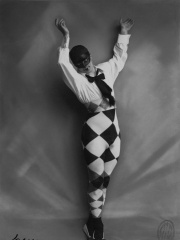
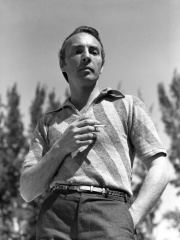
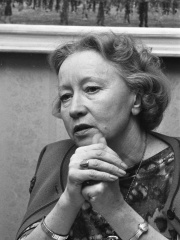
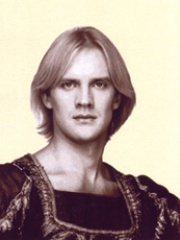
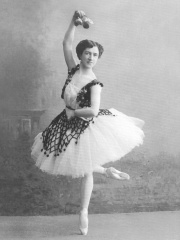
The Most Famous
DANCERS from Russia
Top 10
The following people are considered by Pantheon to be the top 10 most legendary Russian Dancers of all time. This list of famous Russian Dancers is sorted by HPI (Historical Popularity Index), a metric that aggregates information on a biography's online popularity. Visit the rankings page to view the entire list of Russian Dancers.

1. Rudolf Nureyev (1938 - 1993)
With an HPI of 77.75, Rudolf Nureyev is the most famous Russian Dancer. His biography has been translated into 66 different languages on wikipedia.
Rudolf Khametovich Nureyev (17 March 1938 – 6 January 1993) was a Soviet-born ballet dancer and choreographer. Nureyev is widely regarded as the preeminent male ballet dancer of the 20th century, as well as one of the greatest ballet dancers of all time. Nureyev was born on a Trans-Siberian train near Lake Baikal, in Siberia, Soviet Union, to a Tatar family. He began his career in Leningrad with the company that in the Soviet era was called the Kirov Ballet. In 1961, he defected to the West, despite KGB efforts to stop him. This was the first defection of a Soviet artist during the Cold War, and it created an international sensation. He went on to dance with The Royal Ballet in London and became a global star. Known for his charisma, technical brilliance, and intense stage presence, Nureyev helped elevate the role of the male dancer in ballet. From 1983 to 1989, he directed the Paris Opera Ballet and became its chief choreographer. He also produced his own interpretations of numerous classical works, including Swan Lake, Giselle, and La Bayadère.

2. Anna Pavlova (1881 - 1931)
With an HPI of 77.37, Anna Pavlova is the 2nd most famous Russian Dancer. Her biography has been translated into 77 different languages.
Anna Pavlovna Pavlova (born Anna Matveyevna Pavlova; 12 February [O.S. 31 January] 1881 – 23 January 1931) was a Russian prima ballerina. She was a principal artist of the Imperial Russian Ballet and the Ballets Russes of Sergei Diaghilev, but is most recognized for creating the role of The Dying Swan and, with her own company, being the first ballerina to tour the world, including South America, India, Mexico and Australia.

3. Maya Plisetskaya (1925 - 2015)
With an HPI of 70.39, Maya Plisetskaya is the 3rd most famous Russian Dancer. Her biography has been translated into 55 different languages.
Maya Mikhailovna Plisetskaya (Russian: Майя Михайловна Плисецкая; 20 November 1925 – 2 May 2015) was a Soviet and Russian ballet dancer, choreographer, ballet director, and actress. In post-Soviet times, she held both Lithuanian and Spanish citizenship. She danced during the Soviet era at the Bolshoi Theatre under the directorships of Leonid Lavrovsky, then of Yury Grigorovich; later she moved into direct confrontation with him. In 1960, when famed Russian ballerina Galina Ulanova retired, Plisetskaya became prima ballerina assoluta of the company. Her early years were marked by political repression and loss. Her father, Mikhail Plisetski, a Soviet official, was arrested in 1937 and executed in 1938, during the Great Purge. Her mother, theater and silent film actress Rachel Messerer, was arrested in 1938 and imprisoned for a few years, then held in a concentration camp together with her infant son, Azari. The older children were faced with the threat of being put in an orphanage but were cared for by maternal relatives. Maya was adopted by their aunt Sulamith Messerer, and Alexander was taken into the family of their uncle Asaf Messerer; both Alexander and Azary eventually became solo dancers of the Bolshoi. Plisetskaya studied ballet at The Bolshoi Ballet School from age nine, and she first performed at the Bolshoi Theatre when she was eleven. She studied ballet under the direction of Elizaveta Gerdt and also her aunt, Sulamith Messerer. Graduating in 1943 at the age of eighteen, she joined the Bolshoi Ballet company, quickly rising to become their leading soloist. In 1959, during the Thaw Time, she started to tour outside the country with the Bolshoi, then on her own. Her fame as a national ballerina was used to project the Soviet Union's achievements during the Cold War. Premier Nikita Khrushchev considered her to be "not only the best ballerina in the Soviet Union, but the best in the world". As an artist, Plisetskaya had an inexhaustible interest in new roles and dance styles, and she liked to experiment on stage. As a member of the Bolshoi until 1990, she had international exposure and her skills as a dancer changed the world of ballet. She set a higher standard for ballerinas, both in terms of technical brilliance and dramatic presence. As a soloist, Plisetskaya created a number of leading roles, including Juliet in Lavrovsky's Romeo and Juliet; Phrygia in Yakobson's Spartacus (1958); in Grigorovich's ballets : Mistress of the Copper Mountain in The Stone Flower (1959); Aurora in The Sleeping Beauty (1963); Mahmene Banu in The Legend of Love (1965); Alberto Alonso's Carmen Suite (1967), choreographed especially for her; and Maurice Béjart's Isadora (1976). Among her most acclaimed roles were Kitri in Don Quixote, Odette-Odile in Swan Lake, and The Dying Swan, first danced as a pre-graduate student under the guidance of Sulamith Messerer. A fellow dancer said that her dramatic portrayal of Carmen, reportedly her favorite role, "helped confirm her as a legend, and the ballet soon took its place as a landmark in the Bolshoi repertoire". Her husband, composer Rodion Shchedrin, wrote the scores to a number of her ballets. Having become "an international superstar" and a continuous "box office hit throughout the world", Plisetskaya was treated by the Soviet Union as a favored cultural emissary. Although she toured extensively during the same years that other prominent dancers defected, including Rudolf Nureyev, Natalia Makarova, Alexander Godunov and Mikhail Baryshnikov, Plisetskaya always refused to defect. In 1991, she published her autobiography, I, Maya Plisetskaya.

4. Michel Fokine (1880 - 1942)
With an HPI of 70.23, Michel Fokine is the 4th most famous Russian Dancer. His biography has been translated into 45 different languages.
Michael Fokine (23 April [O.S. 11 April] 1880 – 22 August 1942) was a Russian choreographer and dancer.
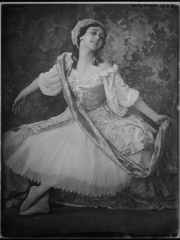
5. Tamara Karsavina (1885 - 1978)
With an HPI of 68.74, Tamara Karsavina is the 5th most famous Russian Dancer. Her biography has been translated into 50 different languages.
Tamara Platonovna Karsavina (Russian: Тамара Платоновна Карсавина; 9 March 1885 – 26 May 1978) was a Russian prima ballerina, renowned for her beauty, who was a principal artist of the Imperial Russian Ballet and later of the Ballets Russes of Sergei Diaghilev. After settling in Britain at Hampstead in London, she began teaching ballet professionally and became recognised as one of the founders of modern British ballet. She assisted in the establishment of The Royal Ballet and was a founder member of the Royal Academy of Dance, which is now the world's largest dance-teaching organisation.

6. George Balanchine (1904 - 1983)
With an HPI of 68.25, George Balanchine is the 6th most famous Russian Dancer. His biography has been translated into 45 different languages.
George Balanchine (; born Georgiy Melitonovich Balanchivadze; January 22, 1904 [O.S. January 9] – April 30, 1983) was a Georgian-American ballet choreographer, recognized as one of the most influential choreographers of the 20th century. Styled as the father of American ballet, he co-founded the New York City Ballet and remained its artistic director for more than 35 years. His choreography is characterized by plotless ballets with minimal costume and décor, performed to classical and neoclassical music. Born in St. Petersburg, Russia, Balanchine took the standards and technique from his time at the Imperial Ballet School and fused it with other schools of movement that he had adopted during his tenure on Broadway and in Hollywood, creating his signature "neoclassical style". He was a choreographer known for his musicality; he expressed music with dance and worked extensively with leading composers of his time like Igor Stravinsky. Balanchine was invited to America in 1933 by Lincoln Kirstein, a young arts patron; together they founded the School of American Ballet in 1934 as well as the New York City Ballet in 1948.

7. Galina Ulanova (1910 - 1998)
With an HPI of 66.11, Galina Ulanova is the 7th most famous Russian Dancer. Her biography has been translated into 39 different languages.
Galina Sergeyevna Ulanova (Russian: Галина Сергеевна Уланова, pronounced [ɡɐˈlʲinə ʊˈlanəvə]; 8 January 1910 [O.S. 26 December 1909] – 21 March 1998) was a Russian ballet dancer. She is frequently cited as being one of the greatest ballerinas of the 20th century.

8. Alexander Godunov (1949 - 1995)
With an HPI of 64.23, Alexander Godunov is the 8th most famous Russian Dancer. His biography has been translated into 30 different languages.
Alexander Borisovich Godunov (Russian: Александр Борисович Годунов; November 28, 1949 – May 1995) was a Russian-American ballet dancer and film actor. A member of the Bolshoi Ballet, he became the troupe's Premier danseur. In 1979, he defected to the United States. While continuing to dance, he also began working as a supporting actor in Hollywood films. He had prominent roles in films such as Witness (1985) and Die Hard (1988).

9. Agrippina Vaganova (1879 - 1951)
With an HPI of 64.14, Agrippina Vaganova is the 9th most famous Russian Dancer. Her biography has been translated into 31 different languages.
Agrippina Yakovlevna Vaganova (Russian: Агриппина Яковлевна Ваганова; 26 June 1879 – 5 November 1951) was a Russian and Soviet ballerina, teacher, and choreographer, widely regarded as one of the most influential ballet pedagogues of the twentieth century. She developed the Vaganova method, a system of classical ballet training that remains foundational worldwide.
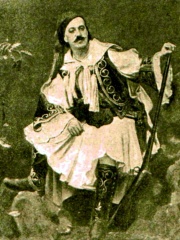
10. Lev Ivanov (1834 - 1901)
With an HPI of 63.14, Lev Ivanov is the 10th most famous Russian Dancer. His biography has been translated into 20 different languages.
Lev Ivanovich Ivanov (Russian: Лев Ива́нович Ива́нов; 2 March 1834, Moscow – 24 December 1901, Saint Petersburg) was a Russian ballet dancer and choreographer and later, Second Balletmaster of the Imperial Ballet. As a performer with the Imperial Ballet, he achieved prominence after performing as an understudy in a benefit performance of La Fille Mal Gardée. He is most famous as the choreographer of Acts II and IV of Swan Lake, which include the Dance of the Little Swans, Act II of Cinderella, and The Nutcracker, which he choreographed alongside Marius Petipa.
People
Pantheon has 23 people classified as Russian dancers born between 1799 and 1991. Of these 23, 6 (26.09%) of them are still alive today. The most famous living Russian dancers include Vladimir Vasiliev, Anastasia Volochkova, and Diana Vishneva. The most famous deceased Russian dancers include Rudolf Nureyev, Anna Pavlova, and Maya Plisetskaya. As of April 2024, 3 new Russian dancers have been added to Pantheon including Anastasia Volochkova, Natalia Osipova, and Olga Smirnova.
Living Russian Dancers
Go to all RankingsVladimir Vasiliev
1940 - Present
HPI: 57.47
Anastasia Volochkova
1976 - Present
HPI: 46.09
Diana Vishneva
1976 - Present
HPI: 45.53
Polina Semionova
1984 - Present
HPI: 43.81
Natalia Osipova
1986 - Present
HPI: 43.02
Olga Smirnova
1991 - Present
HPI: 37.90
Deceased Russian Dancers
Go to all RankingsRudolf Nureyev
1938 - 1993
HPI: 77.75
Anna Pavlova
1881 - 1931
HPI: 77.37
Maya Plisetskaya
1925 - 2015
HPI: 70.39
Michel Fokine
1880 - 1942
HPI: 70.23
Tamara Karsavina
1885 - 1978
HPI: 68.74
George Balanchine
1904 - 1983
HPI: 68.25
Galina Ulanova
1910 - 1998
HPI: 66.11
Alexander Godunov
1949 - 1995
HPI: 64.23
Agrippina Vaganova
1879 - 1951
HPI: 64.14
Lev Ivanov
1834 - 1901
HPI: 63.14
Yury Grigorovich
1927 - 2025
HPI: 62.57
Léonide Massine
1896 - 1979
HPI: 61.44
Newly Added Russian Dancers (2025)
Go to all RankingsAnastasia Volochkova
1976 - Present
HPI: 46.09
Natalia Osipova
1986 - Present
HPI: 43.02
Olga Smirnova
1991 - Present
HPI: 37.90
Overlapping Lives
Which Dancers were alive at the same time? This visualization shows the lifespans of the 17 most globally memorable Dancers since 1700.


